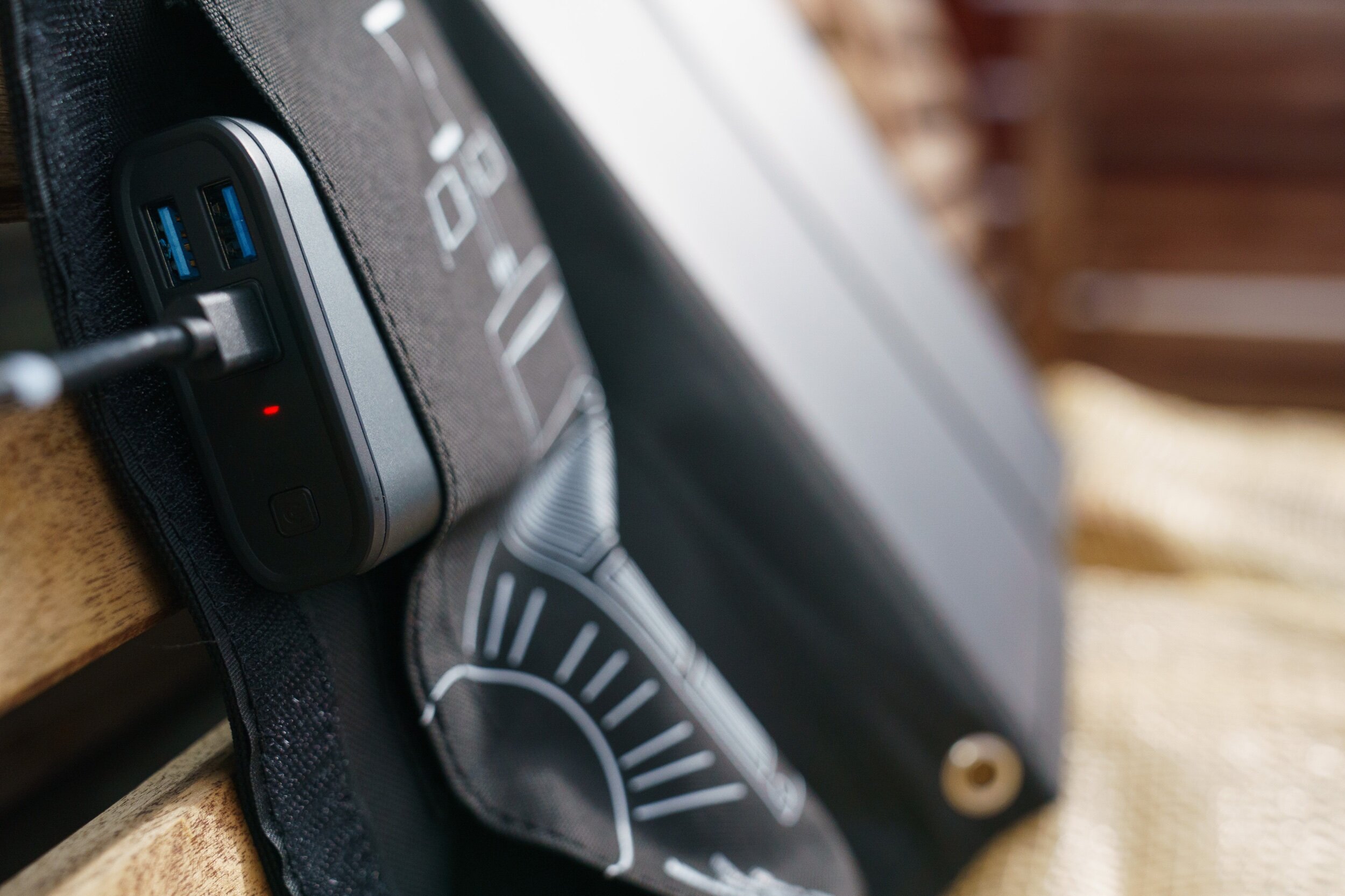Svalbard expedition: charging camera gear in the field
One of my first concerns when starting to plan a 10 day skiing expedition to Svalbard was how to go about charging batteries for my camera and other electronic devices. There are no power sockets hidden in the ice or power generators. Given that the trip is planned at the end of April there will be plenty of daylight - actually daylight is all there is even at night. Above the arctic circle the sun never sets in the summertime which makes solar power a first choice. Solar panels do require a lot of sun though and the weather in that region changes quickly, particlularly in the spring. I need a power source that can charge my camera batteries that I can rely on will give my batteries the needed juice. A power bank can charge your devices a number of times depending on the size of the internal battery of the power bank and will eventually run out of charge cycles leaving you powerless.
Powerbanks and most electronic devices these days can be charged by usb and if solar panels can charge the main power source - the power bank my problem might be solved.
I found a 20.000 mAh powerbank online - a relatively cheap one but that had received great reviews. I ended up with an Andersson 20.000 mAh version that supports both charging via USB-C and Micro USB.
Then I began to search for a solar panel that is portable but large enough to charge the power bank. I found a 20W solar panel by Linocell. The panel has 3 USB ports and delivers 2A per port or 1A if multiple are used at the same time. The solar panel consists of 3 separate solar panels and folds nicely together to the size of an iPad. And one of the really cool features of this product is that it has loops in each corners so it can be attached on a backpack or in my case on top of an expedition sled.
Given that we will be skiing most of the day the solar panel can be attached to the sled during the day and charge the power bank or on the side of the tent when stopping. The idea is that I will charge the power bank during the day and charge the batteries and devices during the night stuffed into my sleeping bag to keep it warm.
On arrival of the solar panel I almost drained the power of the power bank and placed the solar panel and the power bank on my terrace outside my house and started to monitor the charging performance under various light conditions. I started to note down the time, power bank battery percentage and the light conditions throughout the day.
The first day I tested it was overcast and charging was excruciatingly slow - so slow I thought there was something wrong with the solar panel. But when the sun hit the solar panel directly I saw a big increase in charge speed and rise in the battery percentage of the power bank.
For several days I tested charging and monitoring the performance. In good direct sun I was able to get from 26% remaining power on the power bank to 83% in around 6 hours.
The batteries I have for my camera is 2280mAh and with a power bank of 20.000mAh I should in theory be able to fully charge the battery around 8 times from the power bank. This will give me the opportunity to charge the batteries even though I am not able to charge the power bank every day if the weather is bad or other circumstances do not allow for charging the power bank.
It will be interesting to see how this works in practice in the field. I will make sure to update this article with my findings.

